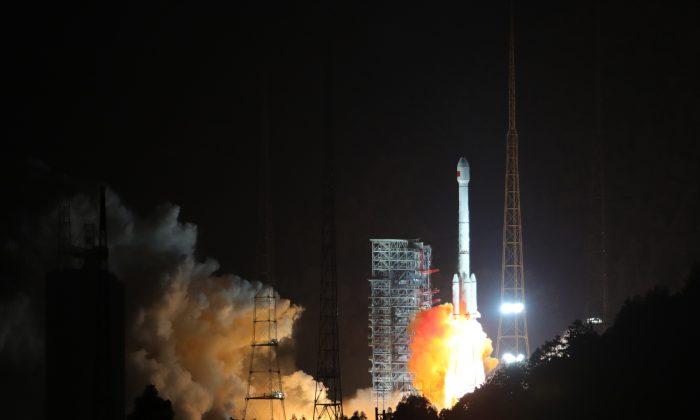A Chinese rocket carrying an Indonesian communications satellite failed to reach orbit on April 9—the second failure for China’s space agency in less than a month, according to Chinese state media Xinhua News Agency.
The rocket was carrying the Palapa-N1, a next-generation satellite for broadband and broadcast communications. The launch took place at 19:46 local time at the Xichang Satellite Launch Center in southwest China. The first and second stages of the three-stage launch appeared to perform well. But the rocket malfunctioned when it was high up in the sky during the third stage, destroying the Indonesian satellite.
[embed]https://www.youtube.com/watch?v=1cMQR1tVkT4[/embed]
On March 16, a Long March 7A rocket failed to launch a classified satellite into orbit during a debut test flight from the Wenchang Satellite Launch Center in southern China, according to Xinhua.
A Chinese netizen claimed that the wreckage of the rocket and the satellite was found near his village in Xichang. In the video he posted, a man was heard making fun of the failure. He shouted, “Garbage recycling! Iron and copper for recycling.”
[embed]https://youtu.be/F7K4kj9E1ME[/embed]
The restriction of chip export by the United States as a result of the trade war has had a big impact on China’s military technology development.
Li Zhengxiu, a military expert at Taiwan’s National Policy Research Foundation, told Radio Free Asia on April 10 that China’s development of rocket technology used to completely rely on chips imported from the United States.
Li warned that if China continues to try to develop military technologies such as rockets with its own chips, it will bring disastrous consequences. He believes the United States has the most advanced chip technology.
The U.S. export controls are aimed at preventing China from obtaining advanced U.S. technology for commercial purposes and diverting it to military use, Reuters reported on April 6.
Most chip manufacturers rely on equipment produced by U.S. companies like KLA, Lam Research, and Applied Materials, according to a 2019 report from China’s Everbright Securities.
“There is no production line in China that uses only equipment made in China, so it is very difficult to make any chipsets without U.S. equipment,” Everbright wrote.





